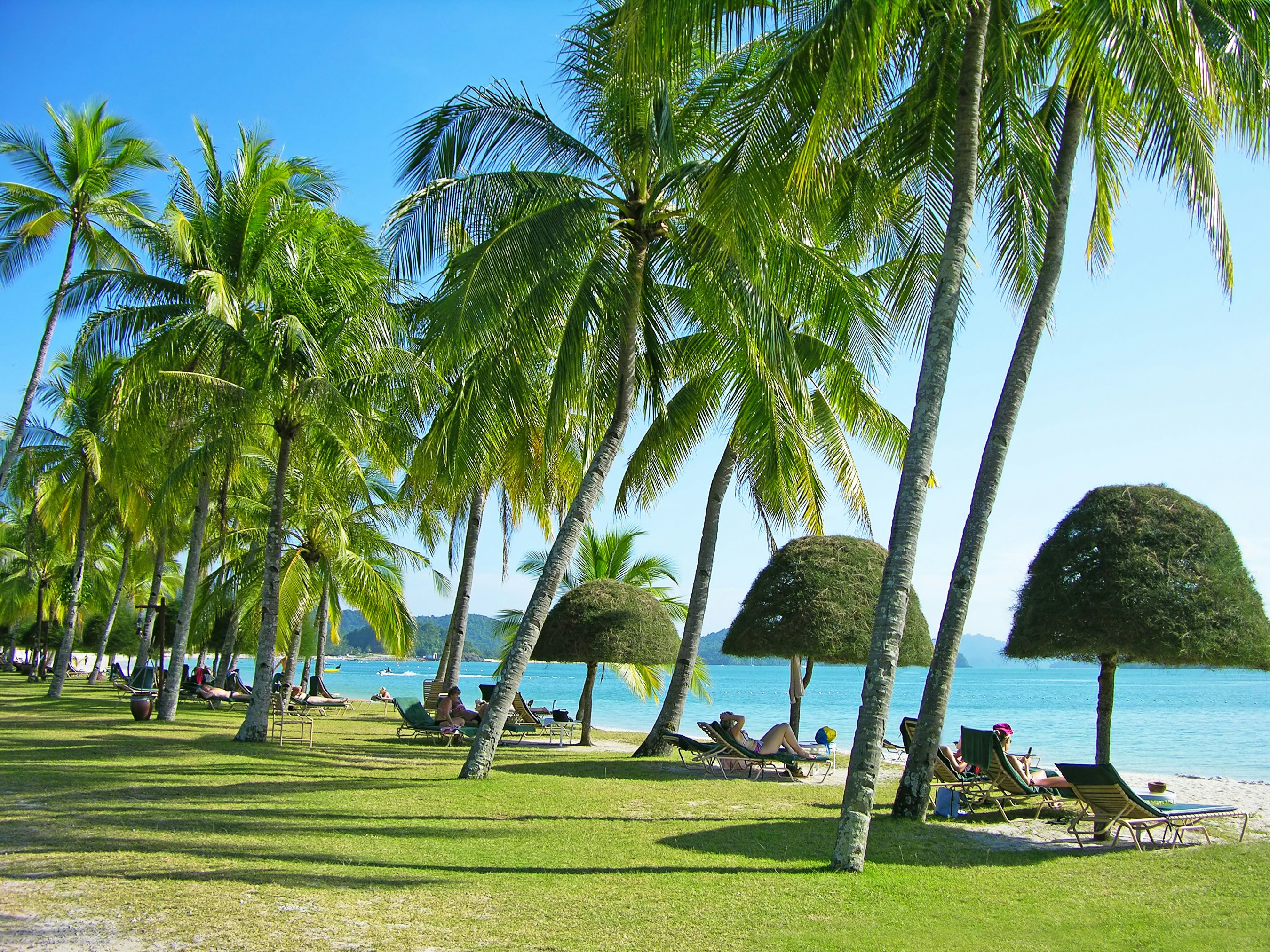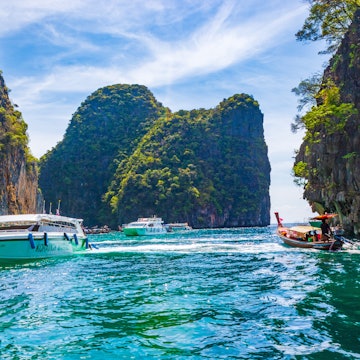

Entering the Federal Territory Mosque in Kuala Lumpur © Patrick Foto / Getty Images
Malaysia has a reputation as the easy country for travel in Southeast Asia, and that certainly applies to the visa situation. Citizens of many countries are granted visa-free entry on arrival, meaning there’s no complicated paperwork standing between you and Malaysia’s beaches, jungles and food markets.
Even better, the relaxed visa situation makes for easy detours to neighboring Singapore, Indonesia, Brunei and Thailand, though you’ll need to check the latest Covid restrictions before you travel. Here’s everything you need to know about visas for Malaysia.
Can I travel to Malaysia without a visa?
In normal circumstances, nationals of most countries in Europe, the US, Canada, Australia, New Zealand, Japan (and many other countries) can visit Malaysia without a visa for a stay of up to 90 days. This applies to entries by air, land and sea.
In practice, 90-day stays are usually given as the default if you arrive in Malaysia by air, but if you enter by land or by sea, you may be given a 30-day entry stamp unless you specifically ask for a longer permit. It’s worth doing this, as extending your stay may not be possible once the stamp is issued.
On arrival, your passport will be stamped and you’ll need to fill out an arrival/departure card; just make sure your passport is valid for six months from the date of entry. Technically, the authorities can ask for proof of sufficient funds for your stay and a ticket for onward travel from Malaysia, but this is not usually requested.

Some countries are granted a shorter stay in Malaysia
Citizens of Russia and many neighboring countries are granted a stay of one month on arrival, and similar rules apply to nationals of many countries in Africa and Central and South America. For longer stays, you’ll need to apply for a visa.
Note that citizens of Israel can only enter Malaysia with written permission from Malaysia’s Ministry of Home Affairs, which rules out easy overland trips from Thailand to Singapore.
What are the visa requirements for Malaysia?
If your home country is not on the visa-free travel list, or you’re planning a long stay, you’ll need to apply for a visa. However, be aware that the only visas valid for more than 90 days are the multi-entry visas reserved for business travelers.
Different rules apply to different countries. Tourist E-Visas lasting up to 30 days are issued to citizens of Serbia & Montenegro, China, India, and many other nations in South Asia and Africa. See the Immigration Department of Malaysia website for details of how to apply and a full list of approved countries.
Other nationals will need to apply for a visa the old-fashioned way at a Malaysian embassy or consulate in their home country. The Malaysian Ministry of Home Affairs has a full list of Malaysian missions overseas; contact your local embassy for advice on the application process.
Business and transit visas for Malaysia
For business trips, it’s usually fine to enter the country as if you were a tourist, but you are not permitted to work for any Malaysian company. Business travelers can also apply for long-duration multiple-entry visas, but the application process is complex – Malaysian embassies can provide details.
Transit visas are also available, but as so many people can enter Malaysia without a visa, they’re rarely needed.

What are the rules for travel to East Malaysia?
Sabah and Sarawak – the two Malaysian states on the island of Borneo – retain a certain degree of control over their borders. Even if you arrive from Peninsular Malaysia, you must go through passport control and have your passport stamped. This also applies when traveling between Sabah and Sarawak via Brunei, and when traveling to the federal district of Pulau Labuan.
When entering Sabah or Sarawak from another part of Malaysia, your new visa stamp will be valid only for the remainder of the period you were granted when you first entered Malaysia. If Malaysian Borneo is your first port of call in Malaysia, you’ll get the full, uninterrupted 30 or 90 days.
Extending a Malaysia visa
While the entry procedures for Malaysia can seem very relaxed, it’s important not to overstay your visa or the visa-free entry period. If you do, you can be detained, fined, deported, and blacklisted – it’s no laughing matter.
In the past, it has been possible to extend a 30-day entry up to 90 days through the Immigration Department of Malaysia, but don’t rely on this being possible with the pandemic muddying the waters. Extending a 90-day stay is out of the question.
The good news is that it is possible to prolong your stay in Malaysia by hopping across the border to a neighboring country. When you re-enter, you’ll be granted a new 30- or 90- day entry stamp on arrival. There’s rarely a problem if you do this once or twice, but the authorities may take a dim view if you repeat the so-called “visa run” too many times.

On the peninsula, the easiest place to leave and re-enter Malaysia is Johor Bahru; local buses buzz across the causeway to Singapore day and night. The other easy option is Pulau Langkawi, which has ferries to Satun (year-round) and Ko Lipe (November to May) in Thailand.
Alternatively, consider crossing the Thai border by train at Padang Besar, or take the ferry to Sumatra in Indonesia from Melaka or Johor Bahru. In East Malaysia, you can cross by bus or boat into Kalimantan in Indonesia, or make the easy hop into Brunei by bus from either Miri or Kota Kinabalu, or by boat from Pulau Labuan.
You may also like:
12 best things you have to do in Singapore
The 15 best things to do in Malaysia: Mountains, marine life, and amazing apes
'Ghosts are a big part of life in Malaysia': healing one year after losing my parents to COVID














